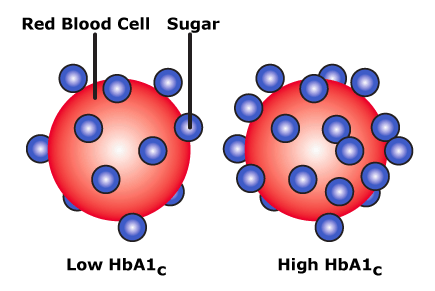Create a Blood Glucose Test Schedule

Testing your Glucose
Testing your blood glucose levels can help you understand how different factors are impacting your health. Knowing how to interpret each
result and how to take action is a very important part of testing. Self testing your blood glucose tells you what your blood glucose is at that time.
It also lets you know how food, exercise, stress, illness or medicine affects your blood glucose. Glucose levels are affected by many factors,
including the type of diabetes you have and the type and frequency of your medication. Once you and your healthcare professional establish a
target range for your blood glucose, you can use the information to adjust your food, exercise or medication.
Helpful recommended times to test:
• Before meals: 70–130 mg/dL (5.0–7.2 mmol/L)
• After meals: less than 180 mg/dL (<10.0 mmol/L)
• Before or after exercise
• Before bed/middle of the night
• Feeling symptoms of high or low blood glucose levels
• When feeling sick or under stress
• Starting a new medication or adjusting current medication
• When traveling
A consistent testing schedule helps you keep blood glucose levels within your target range and feel your best. There is no official recommendation
for blood glucose testing frequency for patients that do not take insulin; however, self-monitoring of blood glucose may be beneficial in achieving
blood glucose targets. For patients that take insulin, it is recommended by the ADA (American Diabetes Association), to perform three or more
blood glucose tests daily. Be sure to follow the schedule provided by your healthcare professional in order to properly keep track of the changes in
your blood glucose throughout the day.
To test your blood glucose level you will need:
• A blood glucose meter
––––Ask your CDE or pharmacists for help in learning how to use a meter.
• Test strips
––––Prodigy® No Coding test strips work will all of our meters, if you are using a different brand, check that you are using the correct test strips.
––––Check the expiration date
• A lancing device to prick your finger
––––Prodigy meters and test strips are approved for Alternate Site Testing.
• Soap and water to clean your hands
• A log or record book to write down the results
––––You can also Prodigy Diabetes Management software to track your results.
Testing your blood glucose levels may seem difficult at first. It will become easier with practice. Prodigy meters come with a toll free customer
service number located on the back of your meter for reference. If you need help, call 1-800-243-2636.
A1C
A1C also known as HbA1C, or glycosolated hemoglobin, is a laboratory blood glucose test. It tells how well you have been controlling your blood
glucose levels in the past 3 months. The results determine if the diabetes plan is working or if changes are required.
Hemoglobin is one part of the red blood cell; it carries oxygen throughout the body. The glucose (sugar) in your blood attaches to the hemoglobin.
It stays there for the life of that red blood cell. The glucose-hemoglobin part of the red blood cell is called A1C. The A1C measures the percent of
glucose that has attached to the hemoglobin. Since red blood cells live for about 90 days, this check shows how your blood glucose has been over
the last 3 months. It is like a “videotape” of your control. In contrast, a self-monitoring blood glucose check is like a “snapshot” of your control –
what is happening at that moment.

 Normal range for people without diabetes is between 4-6%. When the results of your test falls within the normal range, it means that your blood glucose levels have been within the target range for the past three months. Keeping A1C levels at 7% or lower helps to prevent or delay the complications of diabetes.
Normal range for people without diabetes is between 4-6%. When the results of your test falls within the normal range, it means that your blood glucose levels have been within the target range for the past three months. Keeping A1C levels at 7% or lower helps to prevent or delay the complications of diabetes.
* The information provided should be used as a guideline only. Consult your healthcare professional to establish the target ranges best suitable for you.
Source: American Diabetes Association http://care.diabetesjournals.org/